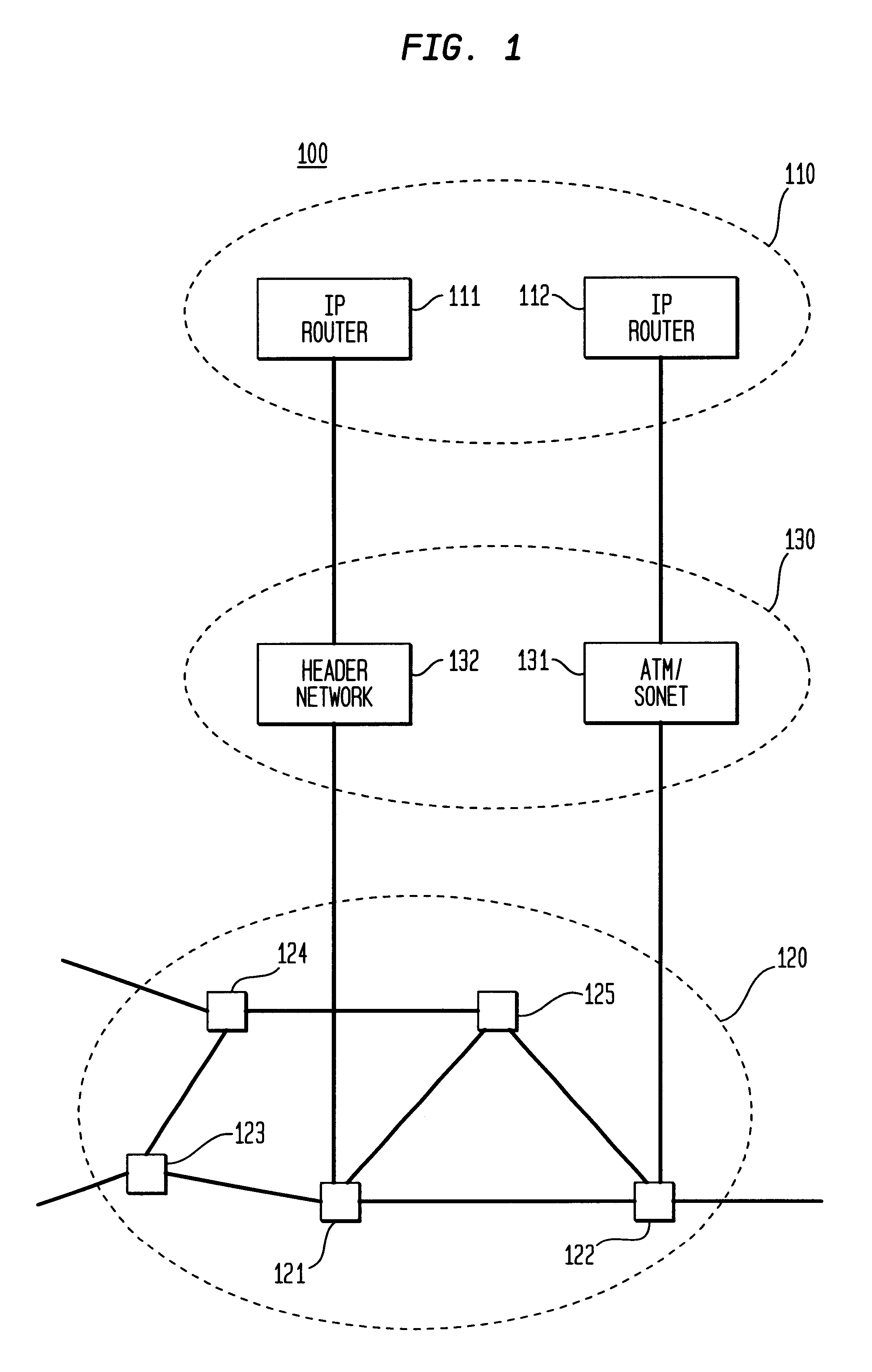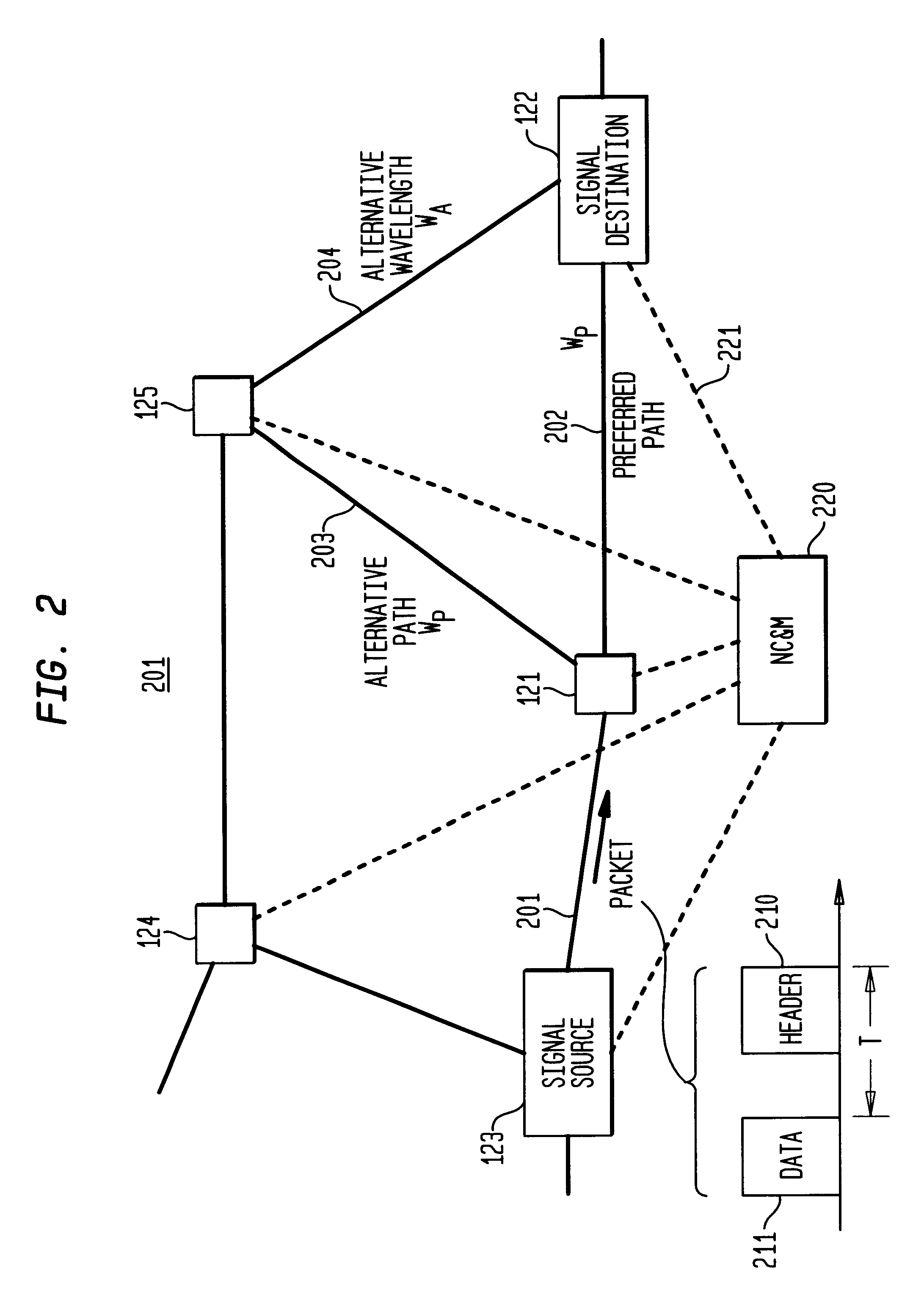High-throughput, low-latency next generation internet networks using optical label switching and high-speed optical header generation, detection and reinsertion
a technology of optical label switching and internet network, applied in the field of optical communication system, can solve the problems of circuit switching, affecting the effect of traffic, and affecting the speed of the connection setup time from request to switch,
- Summary
- Abstract
- Description
- Claims
- Application Information
AI Technical Summary
Benefits of technology
Problems solved by technology
Method used
Image
Examples
Embodiment Construction
In order to achieve ultra-low latency IP over WDM label switching, processing of the optical header at each optical switch must be kept to a minimum during the actual transmission of the optical packet. To achieve this end, a new signaling architecture and packet transmission protocol for performing optical WDM label switching is introduced.
The signaling and packet transmission protocols decouple the slow and complex IP routing functions from the ultra-fast WDM switching and forwarding functions. This decoupling is achieved via the setup of an end-to-end routing path which needs to be performed very infrequently. To send IP packets from a source to a destination, the following step is executed in accordance with the present invention: optical packet transmission, where the arrival of the optical packet triggers the local header processing which among other things looks up the output port for forwarding the packet on to the next hop based on the optical label inside the optical heade...
PUM
 Login to View More
Login to View More Abstract
Description
Claims
Application Information
 Login to View More
Login to View More - R&D
- Intellectual Property
- Life Sciences
- Materials
- Tech Scout
- Unparalleled Data Quality
- Higher Quality Content
- 60% Fewer Hallucinations
Browse by: Latest US Patents, China's latest patents, Technical Efficacy Thesaurus, Application Domain, Technology Topic, Popular Technical Reports.
© 2025 PatSnap. All rights reserved.Legal|Privacy policy|Modern Slavery Act Transparency Statement|Sitemap|About US| Contact US: help@patsnap.com



